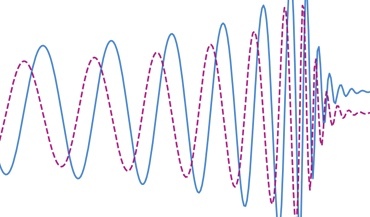 Gravitational memory and spacetime symmetries
Gravitational memory and spacetime symmetries
Symmetries of spacetime infinitely far away from gravitational fields may hint at new laws of nature
The second data release from the Parkes Pulsar Timing Array (PPTA) was not sufficient to confidently detect the nanohertz-frequency gravitational-wave background. Evidence for quadrupolar spatial correlations of the background was statistically marginal. Constraints on spatial correlation coefficients roughly followed the expected Hellings-Downs prediction, but the amplitude of the signal remained unconstrained. However, the search showed strong evidence for the hypothesis that pulsars show a common stochastic signal with the same spectrum of temporal correlations. It is expected that this may appear as a precursor to the detection of spatial correlations. This is because the amplitude of the spatially-uncorrelated component of the signal is twice that of the spatially-correlated component required for the detection. However, with the PPTA, we also showed that the same signal may appear due to mismatch of the assumed (prior) distribution of pulsar noise with the one found in nature. In the follow-up publication, we accounted for this effect and concluded that pulsar spectra really share the common component. Below are the details of the both publications.
Boris Goncharov, Ryan Shannon, Daniel Reardon, George Hobbs, Andrew Zic, and the PPTA
arXiv.org | ApJ Letters | Code repository (GitHub)
Boris Goncharov, Eric Thrane, Ryan Shannon, and the PPTA
arXiv.org | ApJ Letters
 Gravitational memory and spacetime symmetries
Gravitational memory and spacetime symmetries
Symmetries of spacetime infinitely far away from gravitational fields may hint at new laws of nature
 The nanohertz gravitational wave background
The nanohertz gravitational wave background
Is the common-spectrum process observed with pulsar timing arrays a precursor to the detection?